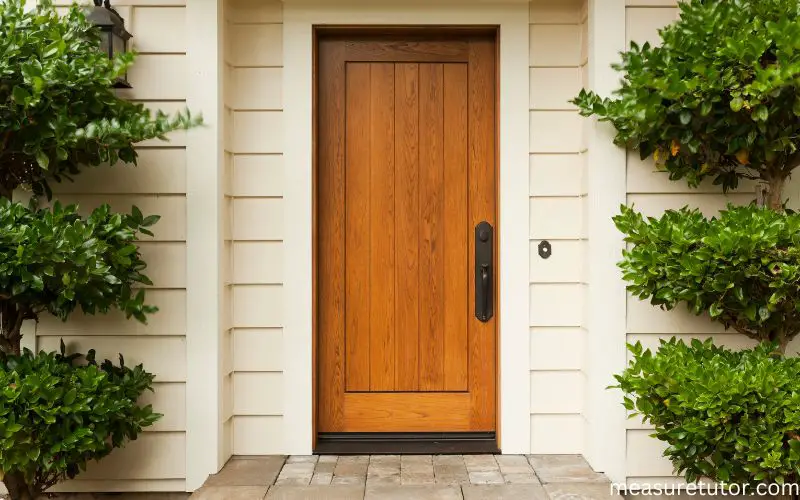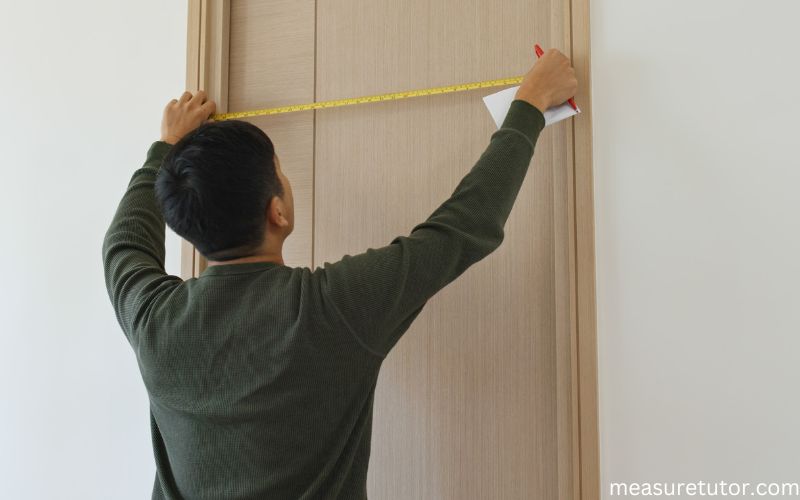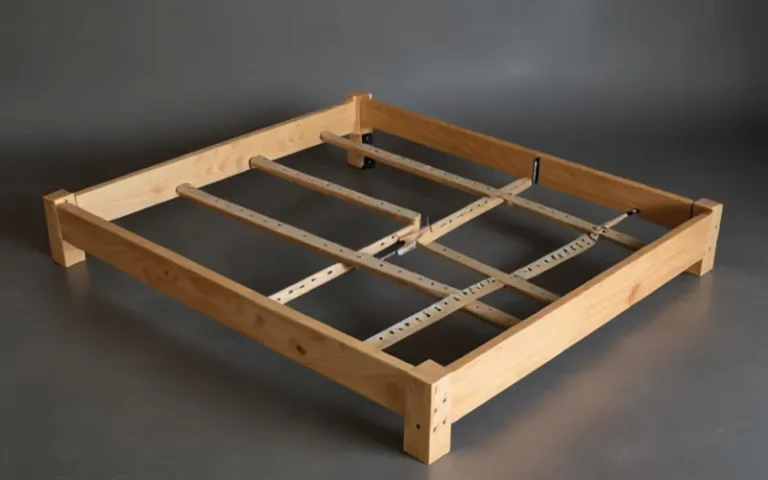How to Measure Different Door Sizes: Ultimate Guide
To measure different door sizes, begin by measuring the width and height with a tape measure. Then, record the dimensions in inches or centimeters.
Furthermore, ensure accurate measurements by measuring at various points on the door. Finally, choose the right-sized door based on the measurements, and consider consulting a professional if necessary. Are you looking to replace or install a new door? Proper measurements are crucial for a perfect fit.
Whether it’s for your home or a commercial property, understanding how to measure different door sizes is essential. By adhering to specific guidelines, you can ensure that your chosen door will fit seamlessly, provide security, and enhance the aesthetics of your space. Stick around to find out how to measure different door sizes accurately and efficiently.
Standard Door Sizes

Understanding the standard door sizes is crucial when it comes to measuring and purchasing doors for your home or office. Knowing the common door size standards can help you save time and money by ensuring that the doors you buy will fit perfectly into the designated space. Let’s take a closer look at the standard door sizes and their variations.
Understanding Common Door Size Standards
Commonly used door sizes are standardized to fit most door openings. The standard width for interior doors is 24, 28, 30, or 32 inches, while the standard height is 80 inches. Exterior doors typically come in 30, 32, 36, or 48 inches wide and 80 inches high. These measurements may vary slightly based on the manufacturer.
Variations In Standard Door Sizes
While the aforementioned sizes are considered standard, it’s important to note that there can be variations based on the design and structure of a building. Older homes may have non-standard door sizes that you’ll need to measure carefully to ensure a proper fit. Additionally, custom-built homes and commercial properties may have unique door size requirements that differ from standard dimensions.
Tools For Measuring Door Sizes
When it comes to accurate measurements, having the right tools is essential for determining door sizes correctly. Before you start measuring doors, it’s important to ensure that you have the necessary tools at your disposal.
Essential Tools For Accurate Measurements
- Tape measure
- Carpenter’s square
- Pencil
- Level
Having these tools will help you measure door sizes with precision and accuracy.
Tips For Choosing The Right Measuring Tools
- Select a durable tape measure with clear markings for accurate readings.
- Use a long tape measure for measuring taller or wider doors.
- A carpenter’s square helps ensure corners are at perfect 90-degree angles.
- A pencil with a sharp tip will allow you to mark measurements clearly on the door.
- A level will help ensure that the door is properly aligned during measurements.
By following these tips and using the right tools, you can easily measure different door sizes accurately and efficiently.
Measuring Interior Doors
When it comes to home improvement projects, properly measuring your doors is crucial for ensuring the perfect fit. In this section, we will guide you through the process of measuring interior doors step by step. We will also discuss how to account for door frames and trims, so you can get the precise measurements needed for your project.
Step-by-step Guide To Measuring Interior Doors
- Clear the area around the door: Before getting started, remove any obstacles or furniture near the door, so you have a clear and unobstructed space to work with.
- Take door height measurements: Using a tape measure, measure the height of the door from the top to the bottom. Make sure to record the measurement in either inches or centimeters for accuracy.
- Measure door width: Next, measure the width of the door from one side to the other. Be sure to measure at the widest point, which is usually at the center of the door.
- Account for door thickness: Measure the thickness of the door by measuring from one edge to the other. This measurement is crucial if you plan on replacing the door and need to ensure the new one will fit into the existing door frame.
- Double-check all measurements: Once you have taken all the necessary measurements, review them to ensure accuracy. It’s always a good idea to double-check before making any purchases or ordering custom doors.
Accounting For Door Frame And Trims
When measuring interior doors, it’s important to account for the door frame and trims. These components can impact the overall dimensions of your door and affect the installation process. Here are a few considerations:
- Include the door frame in your measurements: When measuring the width of your door, be sure to include the door frame as well. This will give you the complete width measurement and ensure the new door fits snugly in the opening.
- Consider the door trim: If your door has trims or moldings around it, make sure to take their dimensions into account. Measure the width and depth of the trims, and add these measurements to the door’s width and thickness for accurate sizing.
- Allow for clearance: Keep in mind that there should be some clearance between the door and the frame to allow for smooth operation. Pre-hung doors usually come with the necessary clearance built-in, but it’s good to double-check.
Measuring Exterior Doors
When it comes to choosing the perfect exterior door for your home, accurate measurements are crucial. Measuring your exterior doors properly ensures that you get the right size for a seamless installation. In this section, we will guide you through the process of measuring your exterior doors and highlight important factors to consider such as the differences in measuring exterior doors and the importance of threshold and weather stripping. Follow these steps to get precise measurements and make your door selection a breeze.
Differences In Measuring Exterior Doors
Before you start measuring your exterior door, it’s important to understand the key differences in measuring options. Exterior doors are typically measured by their frame size, which includes the width of the door jamb and any trim that surrounds the frame. The standard frame size for most exterior doors is 2 inches wider and 2.5 inches taller than the actual door slab.
| Measurement | Description |
|---|---|
| Width | Measure the width of the door slab from edge to edge. Take three separate measurements at the top, middle, and bottom, and use the smallest measurement as your final number. |
| Height | Measure the height of the door slab from top to bottom. Take three separate measurements on the left, center, and right sides, and use the shortest measurement as your final height. |
Considering Threshold And Weather Stripping
When measuring your exterior door, it’s important to take into account the threshold and weather stripping. The threshold is the strip of material that sits at the bottom of the door, creating a seal against drafts and water. It’s essential to include the threshold in your measurements, as it affects the overall height of the door. Measure the height from the top of the threshold to the underside of the trim above the door jamb.
Weather stripping is another crucial element to consider. It helps to prevent drafts and energy loss by creating a seal around the door. To include weather stripping in your measurements, measure the width of the door jamb plus any additional space needed for the weather stripping on each side.
By considering the threshold and weather stripping when measuring your exterior door, you can ensure a proper fit and enhance the energy efficiency of your home.
Custom And Odd-sized Doors
Custom and odd-sized doors can present unique challenges when it comes to measurement and ordering.
Challenges Of Measuring Custom Doors
- Custom doors may not adhere to standard sizing specifications.
- Accurate measurements are crucial to ensure a proper fit.
- Inconsistencies in dimensions require precision
Tips For Ordering Custom Doors
- Get professional assistance for measuring non-standard doors.
- Consider hiring a carpenter for custom installations.
- Factor in the space for a proper swing and hardware fit.
Understanding Handing And Swing
Understanding handing and swing is crucial when it comes to measuring different door sizes. Handing refers to the direction the door swings and the location of the hinges, while swing denotes the actual path the door takes when opened or closed. These factors play a significant role in ensuring the proper fit of a door within a specific space.
Definition And Importance Of Door Handing
Door handing is the direction in which the door swings when opened or closed. It is designated as either left-hand (LH), right-hand (RH), left-hand reverse (LHR), or right-hand reverse (RHR), based on the position of the hinges and the direction of swing when facing the exterior or key side of the door. Understanding door handing is important as it helps in determining the positioning of the door, especially in relation to the surrounding walls and fixtures.
Impact Of Door Swing On Measuring
The door swing has a direct impact on measuring as it determines the clearance needed for the door to open and close without obstruction. This affects the space required both inside and outside the room, as well as the potential positioning of furniture or other objects nearby. Properly understanding the impact of door swing on measuring is essential to ensure that the correct size and type of door are chosen for a specific area, preventing any fitting issues in the future.
Conclusion And Recommendations
Accurate door measurements are vital for any construction or renovation project. Proper measurements ensure that the doors will fit correctly, enhancing functionality and aesthetic appeal.
Any errors in measurement can lead to costly rework and delays.
Importance Of Accurate Door Measurements
Accurate measurements ensure a seamless installation process. It also helps in avoiding unnecessary expenses related to resizing or reinstalling doors. To achieve accurate measurements, utilize precise tools and take into account any irregularities in the door frame or wall.
Tips For Avoiding Common Measurement Errors
- Use a reliable tape measure for accuracy
- Double-check all measurements to prevent errors
- Consider the swing of the door and wall thickness
- Seek professional assistance if uncertain about the process
Frequently Asked Questions Of How To Measure Different Door Sizes
How Do You Measure The Height Of A Door?
To measure the height, use a tape measure from top to bottom of the door frame.
What Is The Standard Width Of A Door?
Common door widths are typically 28, 30, 32, or 36 inches wide.
How Do You Measure For A Pre-hung Door?
Measure the width between the door jambs and the height from the floor to the top jamb.
Can I Replace A Door Without Measuring?
To ensure a proper fit, always measure the height and width before replacing a door.
Why Is Accurate Door Measurement Important?
Accurate measurements prevent issues such as gaps or misalignment during door installation.
Conclusion
Door sizes are vital for functionality and aesthetics. Remember, accurate measurements are key. Be precise to avoid costly errors. Consult experts for tailored advice on door sizes. Embrace these tips to achieve seamless door installations. Happy measuring!






